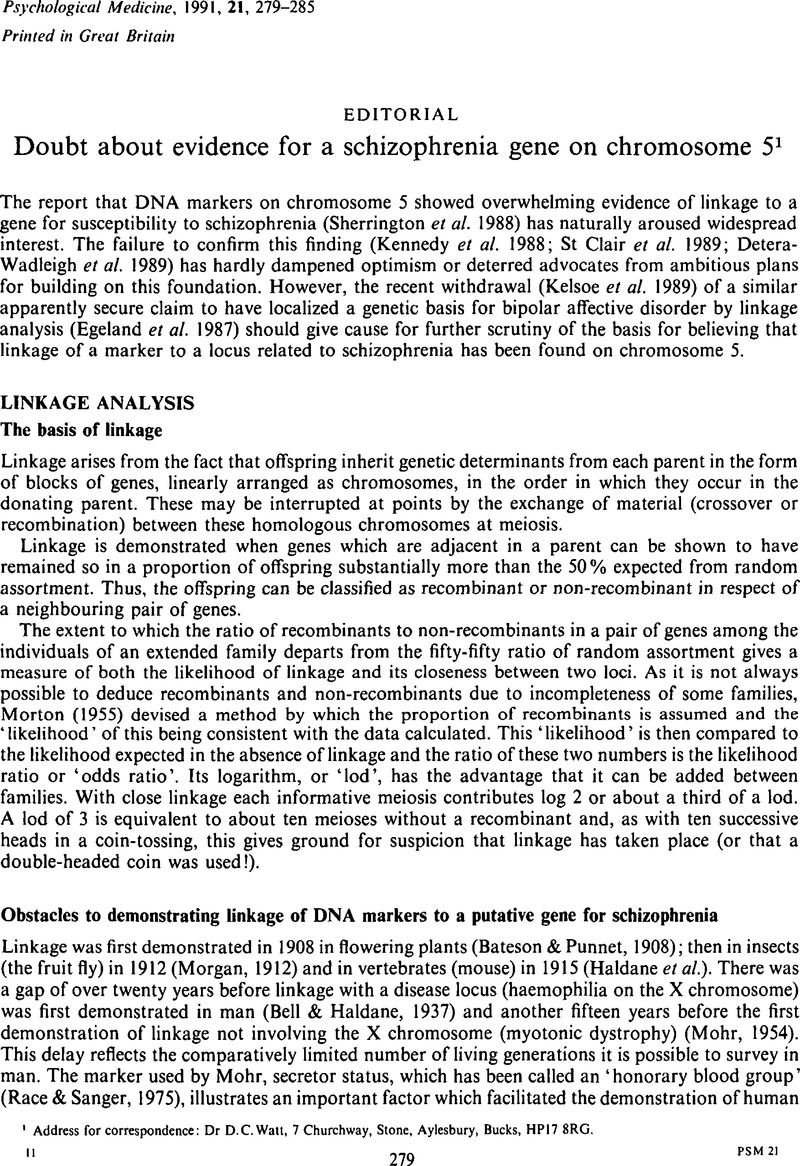Crossref Citations
This article has been cited by the following publications. This list is generated based on data provided by Crossref.
Mitchell, Philip
Selbie, Lisa
Waters, Brent
Donald, Jennifer
Vivero, Christina
Tully, Michele
and
Shine, John
1992.
Exclusion of close linkage of bipolar disorder to dopamine D1 and D2 receptor gene markers.
Journal of Affective Disorders,
Vol. 25,
Issue. 1,
p.
1.
Mulcrone, J.
and
Whatley, S. A.
1993.
The application of differential cloning techniques in post-mortem studies of neuropsychiatric disorders: a way ahead.
Psychological Medicine,
Vol. 23,
Issue. 4,
p.
825.
Mowry, Bryan J.
and
Levinson, Douglas F.
1993.
Genetic Linkage and Schizophrenia: Methods, Recent Findings and Future Directions.
Australian & New Zealand Journal of Psychiatry,
Vol. 27,
Issue. 2,
p.
200.
Rutter, M.
1994.
Psychiatric genetics: Research challenges and pathways forward.
American Journal of Medical Genetics,
Vol. 54,
Issue. 3,
p.
185.
Burley, Todd
Kuehfuss, Kristy
Barrera, Kyrstle
Grattan, Jennifer
Sickler, John
Beck, Henry
and
Goldsmith, Stephanie
2015.
“Schizophrenia” Part I: A Gestalt Analysis and Critique of Genetic Variables.
Gestalt Review,
Vol. 19,
Issue. 1,
p.
10.



